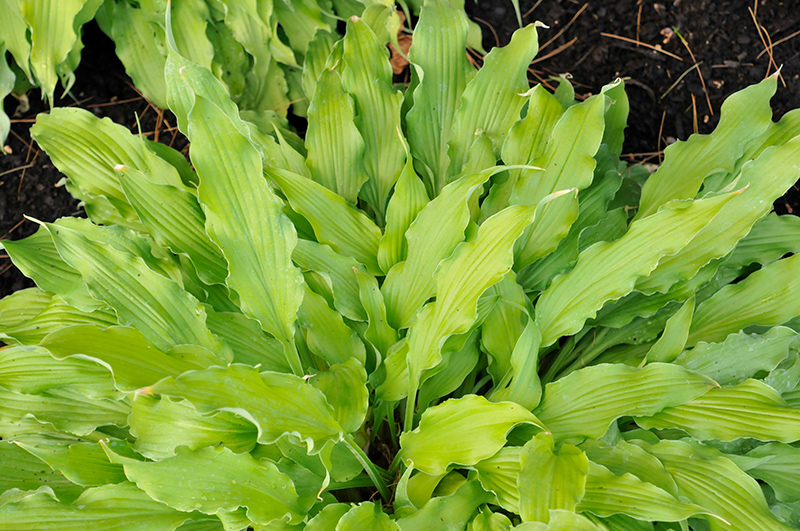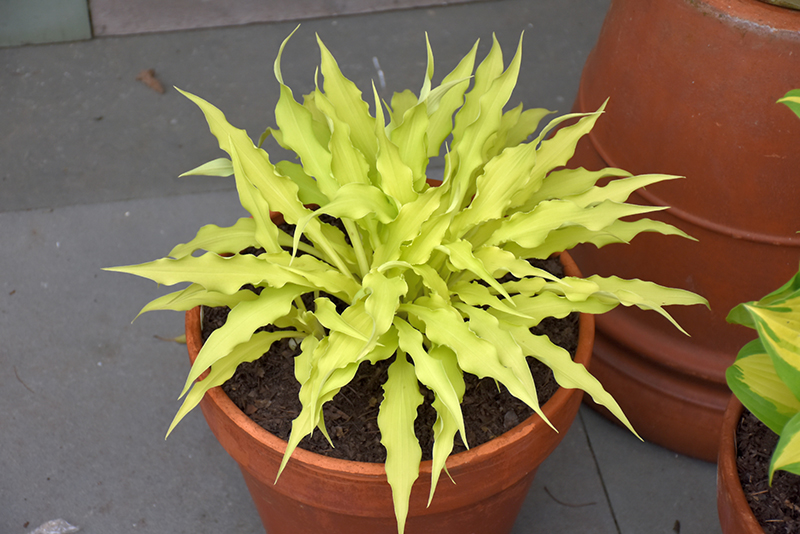Plant Finder
Wiggles and Squiggles Hosta
Hosta 'Wiggles and Squiggles'
Plant Height: 10 inches
Flower Height: 18 inches
Spacing: 28 inches
Sunlight:
![]()
![]()
Hardiness Zone: 3
Other Names: Plantain Lily, Funkia
Brand: Walters Gardens
Description:
A unique hosta that lives up to its name; yellow leaves are long and thin and noted for their extremely wavy margins; has a low, wide habit; provides beautiful texture and contrast to other plants; lavender flowers in mid-summer
Ornamental Features
Wiggles and Squiggles Hosta features dainty spikes of lavender tubular flowers rising above the foliage in mid summer. Its attractive textured narrow leaves emerge light green in spring, turning yellow in color throughout the season.
Landscape Attributes
Wiggles and Squiggles Hosta is a dense herbaceous perennial with tall flower stalks held atop a low mound of foliage. Its medium texture blends into the garden, but can always be balanced by a couple of finer or coarser plants for an effective composition.
This is a relatively low maintenance plant, and is best cleaned up in early spring before it resumes active growth for the season. Gardeners should be aware of the following characteristic(s) that may warrant special consideration;
- Insects
Wiggles and Squiggles Hosta is recommended for the following landscape applications;
- Mass Planting
- Border Edging
- General Garden Use
- Groundcover
Planting & Growing
Wiggles and Squiggles Hosta will grow to be about 10 inches tall at maturity extending to 18 inches tall with the flowers, with a spread of 24 inches. When grown in masses or used as a bedding plant, individual plants should be spaced approximately 28 inches apart. Its foliage tends to remain low and dense right to the ground. It grows at a slow rate, and under ideal conditions can be expected to live for approximately 10 years. As an herbaceous perennial, this plant will usually die back to the crown each winter, and will regrow from the base each spring. Be careful not to disturb the crown in late winter when it may not be readily seen!
This plant does best in partial shade to shade. It prefers to grow in average to moist conditions, and shouldn't be allowed to dry out. It is not particular as to soil type or pH. It is somewhat tolerant of urban pollution. This particular variety is an interspecific hybrid. It can be propagated by division; however, as a cultivated variety, be aware that it may be subject to certain restrictions or prohibitions on propagation.
Disclaimer - Rutgers Landscape & Nursery Plant Finder is an online resource representing many of the varieties that we carry over the course of the season, and is intended for informational purposes only. Inventory varies seasonally, so we cannot guarantee that every plant will be in stock at all times - please contact Rutgers directly for current availability.


